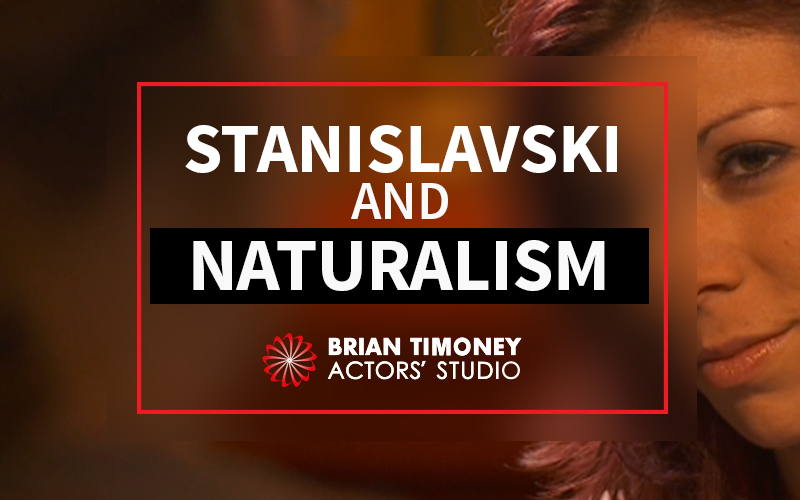Realism versus Naturalism
Although these terms are often used interchangeably, there is a difference we must establish. Realism is the theatre movement, and Naturalism the style of acting. In particular, Naturalism refers to a belief that many acting coaches hold: that a human character is moulded by its relationship and surroundings.
Another way of considering the difference is that Realism is the “way things are,” and Naturalism is the “why things are”; it’s a scientific attempt to portray human character.
Rise of the Real
Although today we throw around compliments like “realistic,” “relatable,” and “natural”, the theatre wasn’t always so accessible. It was Europe in the 19th and 20th centuries that discovered the audience-gripping magic of a little thing called authenticity.
The French
Naturalism – the belief that family and environment form a character – was popularised by the French writer Émile Zola. It was adapted for the stage by the French in the late 19th century, with Zola’s “three principles of naturalism” intact:
- Faire vrai: be realistic, as a close a study of the human condition as possible.
- Faire grand: be meaningful, with each theme and occurrence of large significance.
- Faire simple: be simple, and do not clutter the play with unnecessary speeches nor sub-plots.
The Russians
So Naturalism spread through Europe and the 20th century until it reached a very receptive, Stalin-led USSR. Realism was the voice of choice for Soviet art, literature, and drama, and our friend Konstantin Stanislavski knew that to be successful, he must master it.
Stanislavski had, fortunately, been running a theatre company that was shared in ownership by his co-workers – despite his inherited wealth he could be a friend to the communist State. He wrote and taught Realism, and encouraged Naturalism as an acting technique:
All we ask is that an actor on the stage live in accordance with natural laws.
Like any work of art in Realism, acting bound by natural laws – such as those earlier outlined by Zola – was considered desirable.
This is a trend that is yet to go away: method acting, the Meisner technique, and improvisation are all developments of Realism and Naturalism. We applaud the use of Naturalistic technique, even in supernatural settings: for example, although the fantasy world of Wicked might surround the audience, what draws it in is the natural way Elphaba is written and acted.
Modern Naturalism
Never allow yourself externally to portray anything that you have not inwardly experienced and which is not even interesting to you.
The method we teach today still incorporates the holistic approach of Naturalism. An actor should understand how their character’s history shapes its current motivations, and portray a truthful version of it.
Modern schools often incorporate Stanislavski and Naturalism, with Sanford Meisner’s technique being the most famous. Meisner attended the Theatre Guild in New York with Lee Strasburg, another of our major influences, and advocated for Naturalism as an acting technique throughout his life.
Actors studying the Meisner technique spend huge amounts of time involving themselves in the histories and emotional truths of their characters, so that when the time comes they do not perform but simply react. They might memorise the words to a play, but do not practice this until the very late stages of rehearsal.
Somewhere you can see the Meisner take on Naturalism is the award-winning film Vera Drake, which was directed by famous Naturalism fan Mike Leigh. In an interview, Imelda Staunton describes “living” as her character for months, and the “organic” creation of the film.
How to act Naturally
Ideally an actor should be carried away in his part…
Try this:
- Think back to the last argument you had with a family member. You probably spent plenty of time together in the past, and have a good understanding of their history.
- Remember their character in the argument: their opinion, how they communicated it, and whether they started or ended the argument.
- Can you connect these behaviours to their history at all?
It sounds like a self-help guide – and maybe it’s working like one – but it’s also a good first step into the mindset of Naturalism.
As an acting technique, Naturalism is such an intense interpretation of theatrical Realism that later in his career, Stanislavski would cease to be so enthusiastic. Like his use of Emotional Memory, Naturalism could be too mentally exhausting.
Explained in more detail in My Ultimate Guide to Method Acting, Naturalism should be considered as Stanislavki intended – as an adaptable technique that will transform with your needs.
Create your own method…keep breaking traditions, I beg you.
– all quotes by Konstantin Stanislavki
Do you want to know more about the impact that Naturalism and Method Acting could have on your acting career? Why not get in touch? We’d love to tell you more about how it all works.


